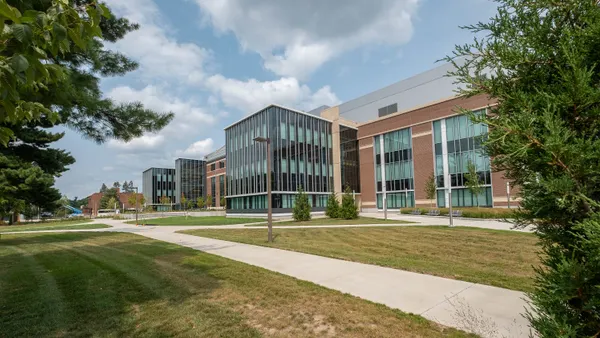As more builders let the sunshine lower homeowner utility bills, those rays are warming up their bottom lines and "green" reputations.
The number of homes that rely on some sort of solar energy to produce at least part of the power they use grew from 30,000 in 2006 to 400,000 in 2013, and stands at approximately half a million today. That number could reach as high as 3.8 million by 2020, according to the U.S. Department of Energy. Between 2012 and 2013 alone, the U.S. solar industry grew by 53%.
More and more, homebuilders are contributing to that growth. Nearly all of the top 10 U.S. homebuilders include some kind of photovoltaic system, often in the form of rooftop solar panels, in new construction—some as an upgrade and others as a standard feature. And the Solar Energy Industries Association estimates that demand for the devices, which generate electricity and can substantially lower a home’s energy bills, is jumping by more than 50% a year.
That growth will multiply in the coming years, as California requires all new residential construction to be “net-zero energy” by 2020, which means the homes will have to generate as much power as they consume. Other states are preparing follow suit.
All-around savings
Solar’s growing popularity among homeowners has something to do with Americans’ increasing awareness of their environmental footprint. But perhaps even more compelling is the mounting evidence that solar energy can whittle a home’s electric bills to nearly nothing—and the technology has become more affordable as demand increases, as local and federal governments pile on subsidies, and as homebuilders make it easier to buy and use solar devices.
While more owners of existing homes are adding solar panels than buyers of new dwellings, according to the Solar Energy Industries Association, the energy-makers are quickly gaining traction with buyers of newly constructed abodes.
Solar’s most powerful markets are in northern and southern California, according to a Builder magazine ranking. Homeowners in Austin and San Antonio, TX; Washington, DC; Phoenix and Scottsdale, AZ; Portland, OR; Albuquerque, NM; and Denver also are among the most likely to purchase the power source.
Builders see benefits
In response, builders have installed solar power systems on thousands of homes across the country. Meritage Homes was one of the first production builders to offer a solar option, and it estimates that about 5% of its buyers pay for the upgrade. Big builder Lennar has added them as standard features to homes in more than 124 new-home communities in California and Colorado, where it offers homeowners who do not want to buy them the option of leasing them from the builder while still reaping the savings on their electric bills.
KB Home lets the homebuyer choose between buying the arrays or going through a third-party provider to install and operate them. Pulte and others also offer the technology either as an upgrade or standard fare.
A fairly easy sell
Solar isn’t a hard sell for homebuilders. The National Renewable Energy Laboratory found that homes equipped with solar sold 20% faster—and for 17% more—than neighboring dwellings without the benefit of sun-subsidized electricity. Shea Homes reported it sold out a 257-home subdivision within a year—two years quicker than it had planned.
Still, some homeowners need convincing. Here are five selling points that builders are successfully using to convince homebuyers to upgrade to solar:
1. It’s about 20% less expensive to install solar panels during new construction than to add them after a home has already been built.
2. The price of solar equipment is declining; in fact, it costs less than half as much as it did in 2008 to install a rooftop array today. And those panels will easily pay for themselves over the life of the product. Builder magazine reports that a $14,000 solar array will generate approximately $25,000 worth of electricity. Another study revealed that a solar energy system can reduce electricity bills by up to 80% in a new townhome.
3. Homeowners aren’t on their own when the bill for the equipment arrives. Federal and state tax credits and utility rebates are readily available. Here is a list of incentives across the country.
4. Solar gives back when an owner sells the home. The Lawrence Berkeley Lab has found that homes with solar panels sell for a premium; in fact, an array adds an average of $24,705 to the selling price of an existing home.
5. Builders are making it easier for homeowners with rooftop panels to sell back to the local utility the excess energy the panels generate beyond what the homeowner can consume.













